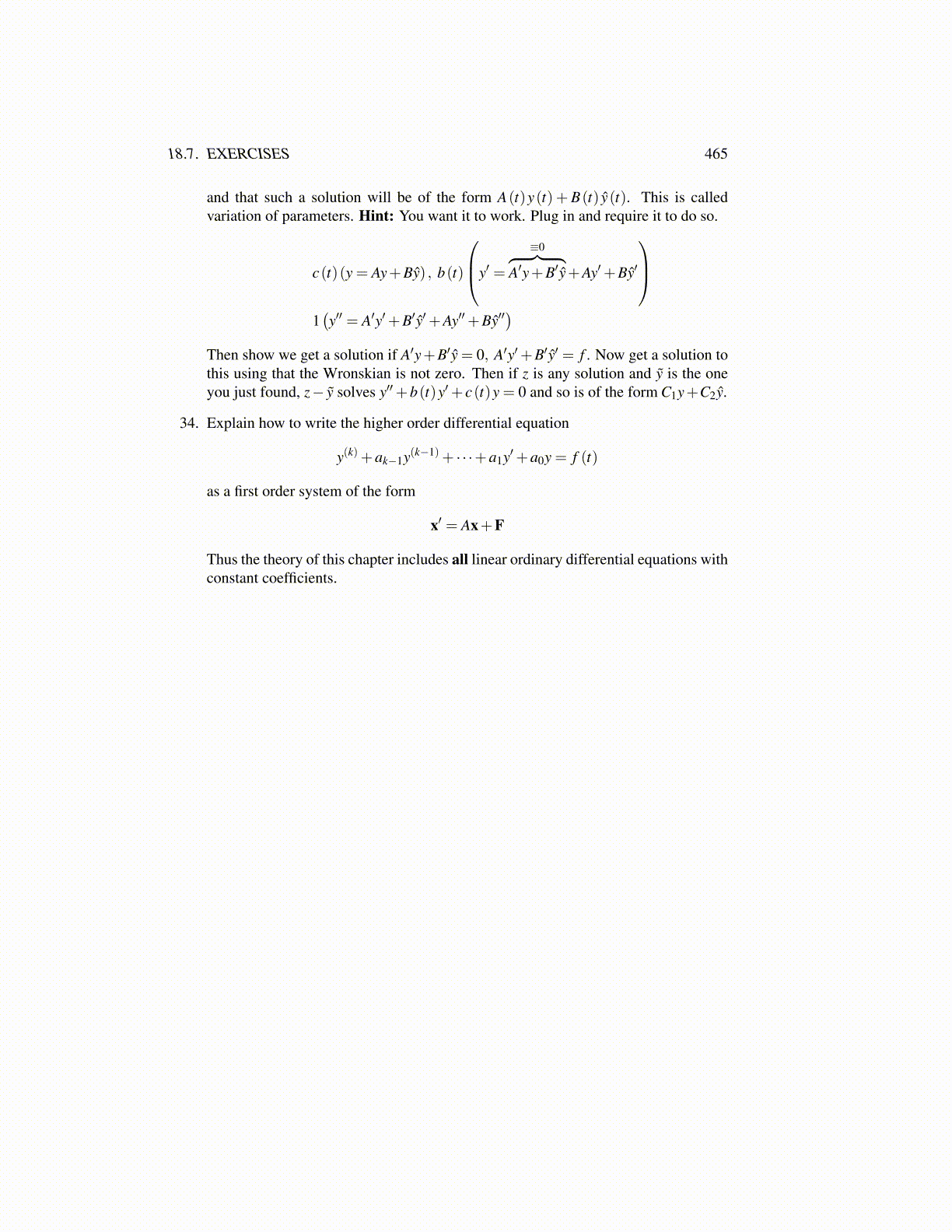
18.7. EXERCISES 465
and that such a solution will be of the form A(t)y(t) + B(t) ŷ(t). This is calledvariation of parameters. Hint: You want it to work. Plug in and require it to do so.
c(t)(y = Ay+Bŷ) , b(t)
y′ =
≡0︷ ︸︸ ︷A′y+B′ŷ+Ay′+Bŷ′
1(y′′ = A′y′+B′ŷ′+Ay′′+Bŷ′′
)Then show we get a solution if A′y+B′ŷ = 0, A′y′+B′ŷ′ = f . Now get a solution tothis using that the Wronskian is not zero. Then if z is any solution and ỹ is the oneyou just found, z− ỹ solves y′′+b(t)y′+ c(t)y = 0 and so is of the form C1y+C2ŷ.
34. Explain how to write the higher order differential equation
y(k)+ak−1y(k−1)+ · · ·+a1y′+a0y = f (t)
as a first order system of the form
x′ = Ax+F
Thus the theory of this chapter includes all linear ordinary differential equations withconstant coefficients.